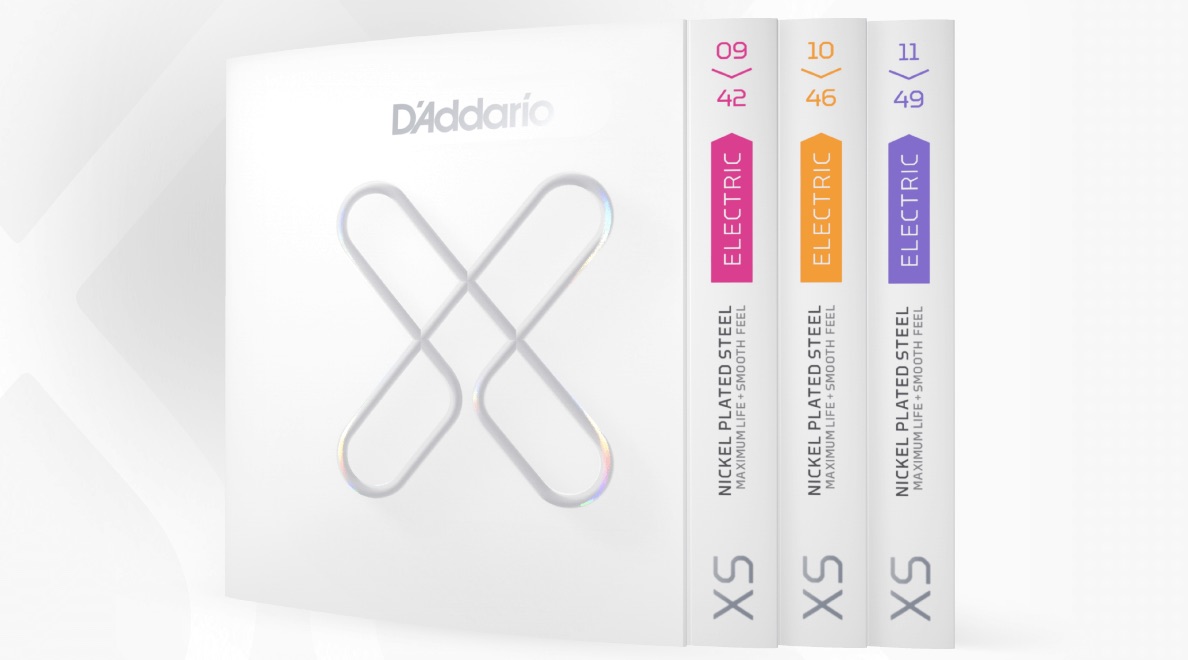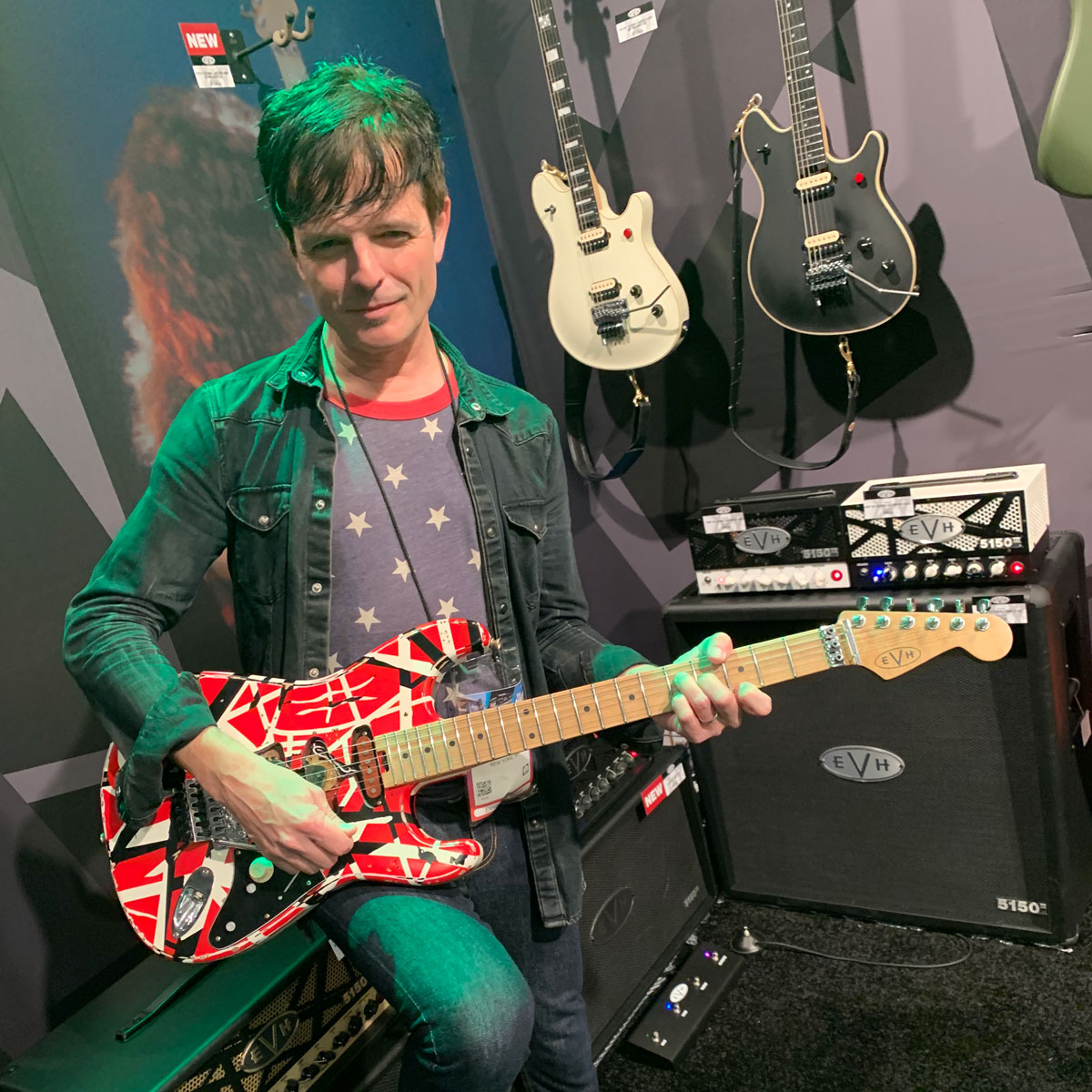D'Addario XS strings review: bring tone, longevity and a smooth feel to the electric/acoustic coated string world
For one GW editor, the stigma of coated strings is over

Before you dismiss this article as my hot take on a particular brand of coated guitar strings, let me be perfectly clear by saying guitar strings have been the bane of my existence as a gear reviewer. Why? Because the subject of guitar strings – coated or non-coated – is probably the most personal and polarizing topic guitarists will “go to the mat” for.
And for good reason: these spaghetti-like strands of musical wires are the metaphorical tires that drive our instruments – and predictably, guitarists will endlessly debate the merits of one brand or type of string over the other, and so on ad nauseam. Honestly, I’d rather be spending my time playing guitar, than be embroiled in this lose-lose situation.
But let me lower the temperature for a moment because on the flip side, I’ll be the first to tell you: great guitar strings make all the difference in tone, feel, and tuning stability, in addition to mitigating string breakage. This is a widely held and undisputed fact. If you’ve ever played cheap guitar strings, you’ll find they’re made with flimsy alloys that feel abrasive and more often than not, leave a metallic residue on your fingertips, which translates into a less-than-ideal experience and dull tone. The good news is there are far more great string brands out there than shoddy ones.
Now, since I’m here to talk about the D’Addario XS strings, I’ll let you know I’m not going to sell or preach about why you should be using these strings, because it’s not my job to do that. However, what I’m more than willing to divulge is my experience with the D’Addario XS coated strings.
I received sets for the XS Nickel Plated Steel Electrics (which I strung on my Fender Stratocaster and Telecaster, and Gibson Les Paul Classic), and XS Acoustic (Phosphor Bronze on my Taylor Builder’s Edition and 80/20 Bronze on my Martin OM), and might I say, the silver-symbol with white packaging is outright beautiful, and what’s cool is the strings have metallic color-coated ball ends in black, silver and brass to distinguish between gauges, rather than D’Addario’s rainbow colors of ball ends found on their XL lines.
Moving forward, I figure I’d have a little fun and shed light on my impressions of the XS strings by detailing their characteristics while using D’Addario’s marketing language to comment on whether the strings live up to their exact wording. Let’s begin with:
“Impossibly thin film coating”
According to D’Addario, this “impossibly thin film coating” on the strings has “1/10 the thickness of a human hair that completely protects the wound strings from corrosion, without dampening the tone. This new film covering is combined with D’Addario’s proprietary dispersion coating, used in our XT line, to protect the plain steel strings as well.”
Get The Pick Newsletter
All the latest guitar news, interviews, lessons, reviews, deals and more, direct to your inbox!
So, if that’s the case, I know what 1/10th of human hair feels like. Now, don’t get me wrong, I’m not faulting the company's claim, I’m only saying I definitely feel coating. But to D’Addario’s credit, the coating is razor thin and unobtrusively pleasant to the touch without the strings feeling glossy or gummy.
Never fade away (maximum life)
Here’s where the XS strings really hit a high mark for me. Having played them for well over two months and over twenty live performances, not to mention, countless rehearsals, I can report I’m positively swayed by these strings. How so? Well, I have yet to break a string – and I punished these strings with extreme bends and sticky sweat throughout all my gigs.
But I know that’s not nearly enough to persuade anyone to investigate them any further, so allow me to elucidate a little more. What I found is that the XS strings (both Electric and Acoustic) begin to break in and settle after a few gigs and practice sessions. Meaning, that crisp, newness feel (which I personally don’t care for) slowly diminishes after some wear and tear. With that, the silver lining is, the strings retain all the tonal properties of a fresh set, but now feel broken in and stretched out to stay in tune indefinitely.
So, durability, consistency and tuning stability is at play here, and that to me is paramount. Also, I found no change in tone, and that is quite remarkable.
Smooth, fast feel
So, this is where I feel it’s more a matter of personal preference. There’s no way around this fact. I know a handful of guitarists who love the feel and tone of coated strings and a smattering of players who are revolted at the thought of them. Again, I will say that D’Addario’s XS strings have a nearly microscopic drop of string-coating, but I can’t say you won’t feel it.
It’s detectable – even for someone who’s never played a coated string. But again, there’s nothing about the coating that will impede your playing or for that matter, tone. As I mentioned before, once the strings have been played on, that coated luster seems to gradually fade enough to feel like non-coated strings.
Tone
Okay, so I cheated a little here. This title is not part of D’Addario’s marketing speak, but we all want to know what the XS strings sound like. Speaking generally, I’ve heard that coated strings have often been pigeonholed for being bright and not as complex, and not having the sustain of non-coated strings. I’m willing to admit that I find these strings to be more brilliant sounding as opposed to being bright.
They also have more presence so that there’s no need for me to dial down treble response from my guitar’s onboard acoustic preamp or from a guitar amplifier. As far as less sustain, I just don’t hear it. I find the disparities with the coated electric strings – compared to non-coated electric strings – to be less perceptible, but I’m willing to concede the acoustic strings have definitive tonal differences. The 80/20 is brighter and more incisive, while the Phosphor Bronze is warmer with a bronzy shimmer.
One thing I can say is both the Electric and Acoustic share a taut and firm bottom end. Coated strings, even with a coating as light as the XS, keep the bass from becoming overly boomy.
So, what have we learned here? Well, for me, the stigma of coated strings is over. Sorry, people, I was with a lot of you on this bandwagon (mostly for electric), but string technology has become so advanced and dialed in, you’d be living in the dark ages not to at least try D’Addario’s XS coated strings. They are quite impressive.
But let me also say, I’m a huge fan and user of other string brands, and what I hope you glean from my experience is to be adventurous in your musical journey, and in this case, try out some new strings that may inspire you. It will only deepen your knowledge. Because isn’t that what being a musician is all about?
Street prices
- Electric: $14.99
- Acoustic: $17.99
- 12-string: $27.99
- For more on the XS strings, visit D'Addario.
Paul Riario has been the tech/gear editor and online video presence for Guitar World for over 25 years. Paul is one of the few gear editors who has actually played and owned nearly all the original gear that most guitarists wax poetically about, and has survived this long by knowing every useless musical tidbit of classic rock, new wave, hair metal, grunge, and alternative genres. When Paul is not riding his road bike at any given moment, he remains a working musician, playing in two bands called SuperTrans Am and Radio Nashville.
“A distinctive brightness that no other strings have been able to capture”: How Rotosound revolutionized the bass world with its Swing Bass 66 strings – and shaped the sound of rock music in the process
“It’s almost impossible for our machinery to make a bad string”: Jim D’Addario on the history, innovations and future of the world’s biggest string manufacturer – and its biggest-selling string sets











